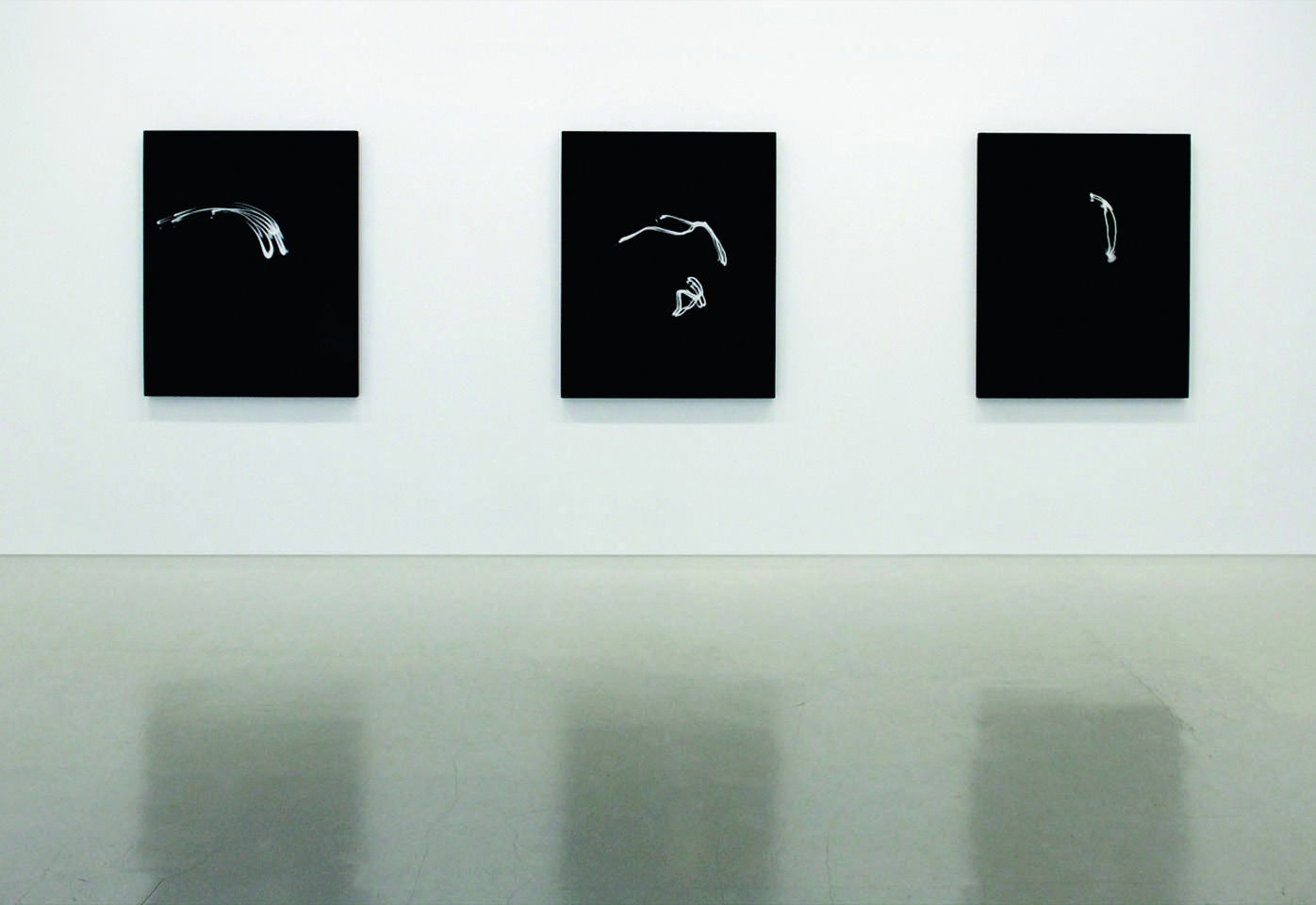Clare Strand
Limits of the Possible and the Impossible
An obsession with examining and finding the border between the possible and the impossible manifests itself in every work made by photographer Clare Strand (b. 1971). She became more widely recognized thanks to her 2002–2003 series Gone Astray. The series consists of two sections (Details and Portraits), and, in addition to Dickensian literary references, takes us on a tour of the history of photography. Gone Astray Details is based on a visuality which may be found, for example, in the photographs of Weegee or the night time scenes of Brassai. In this case, however, it is more of a personal diary, which is presented to us as a surreal-bizarre fictional story. Conversely, in Gone Astray Portraits the artist works with the motif of studio portraiture. In front of a backdrop, painted in the spirit of 19th century landscapists, she presents a seemingly random choice of contemporary characters. However, on second glance, we see small imperfections in those portrayed: a broken leg, a cold sore, or a torn stocking; the sitters hold props that suggest status and class, and gradually we realize that these “portraits” have been arranged and carefully styled by Strand, as if a cast of actors in an urban play. Similarly, we see a hint of the glitz covering the dirt of big cities, the dark corners next to the luxurious facades.
#29 contemplation
Content
- ––– Project
- Matej Chrenka
- Matěj Skalický
- ––– Profiles
- Viktoria Binschtok
- Jáchym Myslivec
- Polina Karpova
- Ján Kekeli
- Tereza Kabůrková
- Martin Vongrej
- Clare Strand
- Mary Ellen Bartley
- Zbigniew Dłubak
- James Welling
- Petr Faster
- Jan Hudeček
- Miloš Šejn
- Jan Svoboda
- ––– Discoveries
- Schinster
- Rudolf Skopec
- Hilla Kurki
- ––– Theory
- Stieglitz/Equivalents
- ––– Events
- Paris Photo 2016
- The History of European Photography 1900-2000
- ––– Fotograf Gallery
- Daniel Steegmann Mangrané
- Jiří Poláček
- Rafani
- Václav Stratil
- ––– Reviews
- Libuše Jarcovjáková - Book of Life
- Surrealism and Photography in Czechoslovakia: On the Needles of Days
- Artpress - The Great Interviews series: Photography
- Havel the Human Being
- Baňka's Reflections (and the need for a conflict of interests)
- The Photograph in the Age of Its Technical Reproducibility and Its Outreaches
- Július Koller - One Man Anti Show
- ––– Portfolios
- "The Other Night Sky": Seeing and Counterseeing
Archive
- #45 hypertension
- #44 empathy
- #43 collecting
- #42 food
- #41 postdigital photography
- #40 earthlings
- #39 delight, pain
- #38 death, when you think about it
- #37 uneven ground
- #36 new utopias
- #35 living with humans
- #34 archaeology of euphoria
- #33 investigation
- #32 Non-work
- #31 Body
- #30 Eye In The Sky
- #29 Contemplation
- #28 Cultura / Natura
- #27 Cars
- #26 Documentary Strategies
- #25 Popular Music
- #24 Seeing Is Believing
- #23 Artificial Worlds
- #22 Image and Text
- #21 On Photography
- #20 Public Art
- #19 Film
- #18 80'
- #17 Amateur Photography
- #16 Photography and Painting
- #15 Prague
- #14 Commerce
- #13 Family
- #12 Reconstruction
- #11 Performance
- #10 Eroticon
- #9 Architecture
- #8 Landscape
- #7 New Staged Photography
- #6 The Recycle Image
- #5 Borders Of Documentary
- #4 Intimacy
- #3 Transforming Of Symbol
- #2 Collective Authorship
- #1 Face







